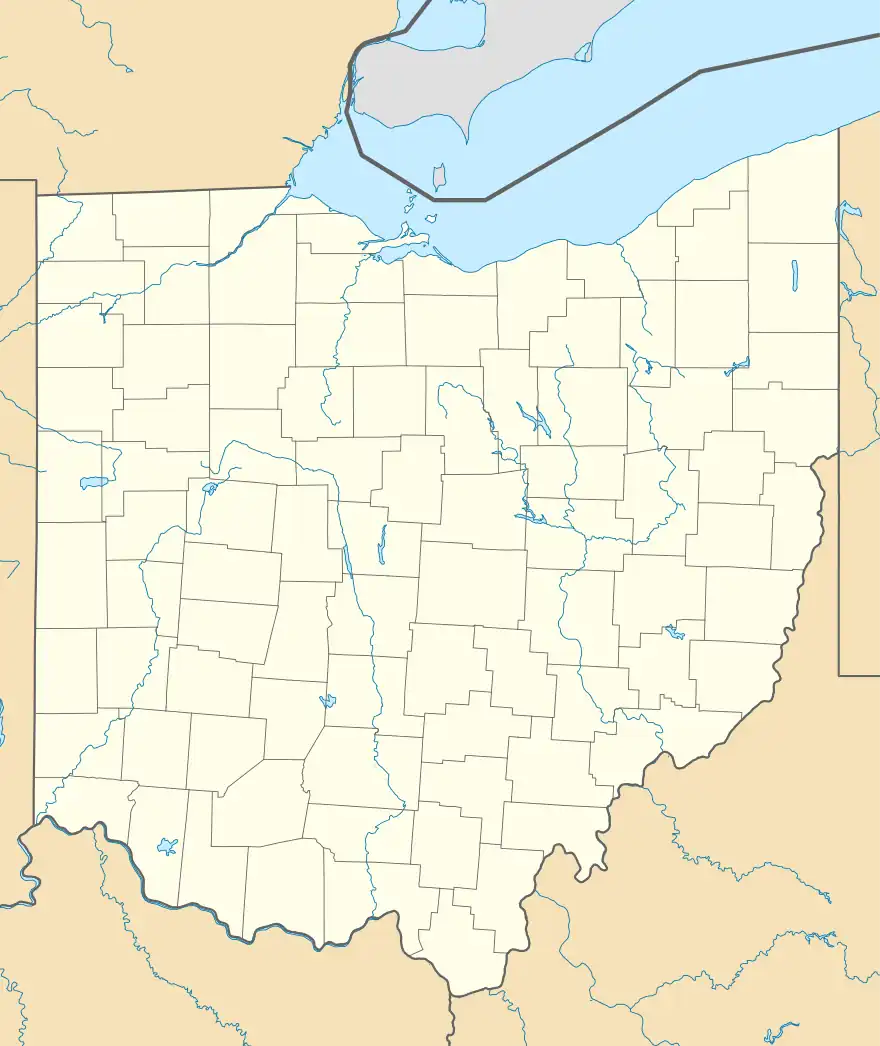O'Shaughnessy Dam and Bridge | |
 View below the dam | |
  | |
| Location | Concord Township / Liberty Township, Delaware County, Ohio, USA |
|---|---|
| Nearest city | Shawnee Hills, Ohio |
| Coordinates | 40°09′14″N 83°07′33″W / 40.15389°N 83.12583°W |
| Built | 1922 |
| Built by | Thompson-Starrett Co. |
| Architect | Frank Packard |
| Architectural style | Late 19th and 20th Century Revivals, Classical Revival, Second Renaissance Revival |
| NRHP reference No. | 90000482[1] |
| Added to NRHP | July 5, 1990 |
The O'Shaughnessy Dam is located on the Scioto River near Dublin, Ohio, United States. The dam forms O'Shaughnessy Reservoir, which is a major source of drinking water for the city of Columbus. It was completed in 1925 following recommendations of then superintendent Jerry O'Shaughnessy (for whom the dam was named).[2][3] At the time, the reservoir was described as "the finest inland waterway in the United States." Located 10 miles (16 km) upstream of the smaller Griggs Dam, it provides a large area for various forms of recreation in addition to its water supply duties. The reservoir holds 6.3 billion US gallons (24,000,000 m3) over a surface area of 845 acres (3.42 km2).[4] The Columbus Zoo and Aquarium is located on the east bank of the reservoir, near the dam.
In 1990, the dam was listed on the National Register of Historic Places.[1]
Hydroelectricity
The city of Columbus installed a hydroelectric operation on the west side of the dam, which was completed in 1987.[5] The turbines can only be operated when there is sufficient flow, which means the dam cannot continuously produce electricity. With a head of 18 feet (5.5 m),[6] the two turbines together produce 5 megawatts.[5][7]
Despite numerous repair attempts the Hydroelectric Turbines have remained offline for approximately 3 years (ostensibly as of August 2018). In January, 2021, The City of Columbus announced plans to repair the hydropower unit and restore the plant to full capacity by 2023.[8]
References
- 1 2 "National Register Information System". National Register of Historic Places. National Park Service. March 13, 2009.
- ↑ Cross, Tom (2008). Fishing Ohio: An Angler's Guide to Over 200 Fishing Spots in the Buckeye State. Globe Pequot Press. p. 58. ISBN 978-0-7627-4326-1.
- ↑ "Water Sources". Department of Public Utilities (City of Columbus, Ohio): Division of Water. Archived from the original on October 8, 2006. Retrieved October 28, 2006.
- ↑ "2005 Annual Report" (PDF). Department of Public Utilities (City of Columbus, Ohio). Retrieved October 28, 2006.
- 1 2 "Green Power: Turning Water Into Electricity - O'Shaughnessy Hydroelectric Plant". Department of Public Utilities (City of Columbus, Ohio): Division of Water. Archived from the original on October 9, 2006. Retrieved October 28, 2006.
- ↑ "Hydropower". Green Energy Ohio. Retrieved October 28, 2006.
- ↑ "Hydroelectricity". Office of the Ohio Consumers' Counsel. Archived from the original on February 16, 2007. Retrieved October 29, 2006.
- ↑ Bush, Bill. "Columbus to make electricity again with O'Shaughnessy Dam hydro plant refurbishment". The Columbus Dispatch. Retrieved January 4, 2021.